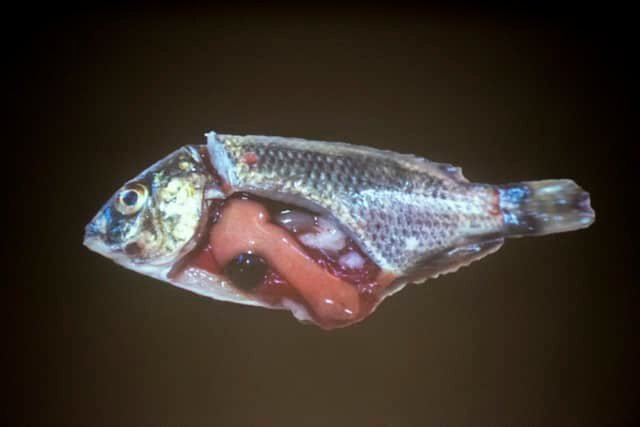With the onset of Tilapia Lake Virus (TiLV) outbreaks in several Asian countries, WorldFish, in collaboration with Bangladesh’s Department of Fisheries, has developed a program to improve biosecurity in the tilapia industry throughout the country. As the first step, a training program has been designed and conducted to train a group of specialists called Master Trainers on improving tilapia hatchery biosecurity.
This manual is a result of that program. The Master Trainers will use this manual for training tilapia hatchery technicians countrywide on how to improve biosecurity in hatcheries.
This work was undertaken as part of the CGIAR Research Program on Fish Agri-Food Systems (FISH). This publication was made possible through support provided by the Department of Fisheries, Bangladesh and the United States Agency for International Development (USAID) funded Aquaculture for Income and Nutrition (AIN) project.
Reference (open):
Mohamed Din MS and Subasinghe R. 2017. Basic biosecurity manual for tilapia hatchery technicians in Bangladesh. Penang, Malaysia: CGIAR Research Program on Fish Agri-Food Systems. Manual: FISH-2017-10.
http://pubs.iclarm.net/resource_centre/FISH-2017-10.pdf
Editor at the digital magazine AquaHoy. He holds a degree in Aquaculture Biology from the National University of Santa (UNS) and a Master’s degree in Science and Innovation Management from the Polytechnic University of Valencia, with postgraduate diplomas in Business Innovation and Innovation Management. He possesses extensive experience in the aquaculture and fisheries sector, having led the Fisheries Innovation Unit of the National Program for Innovation in Fisheries and Aquaculture (PNIPA). He has served as a senior consultant in technology watch, an innovation project formulator and advisor, and a lecturer at UNS. He is a member of the Peruvian College of Biologists and was recognized by the World Aquaculture Society (WAS) in 2016 for his contribution to aquaculture.


